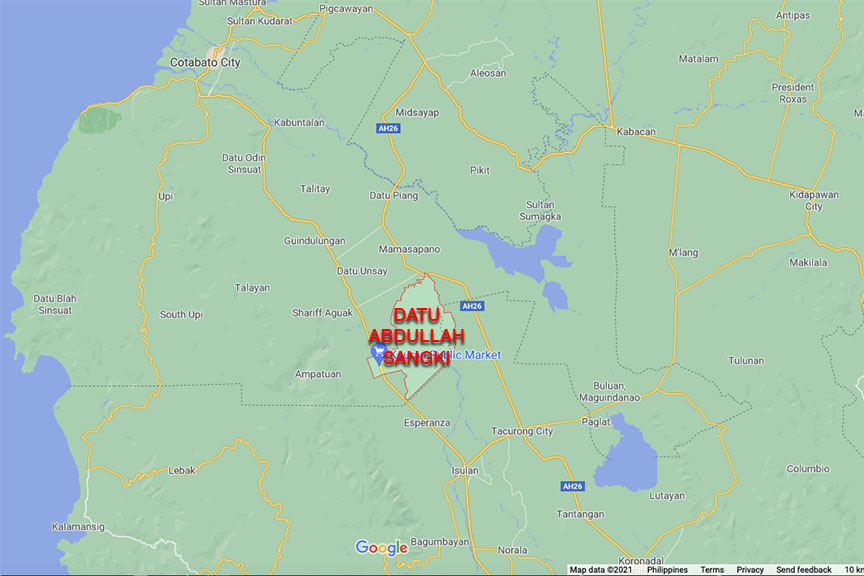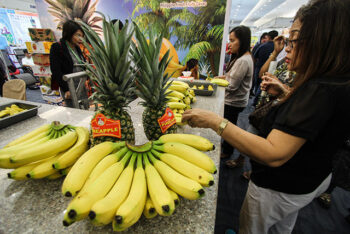ISULAN, Sultan Kudarat (MindaNews / 20 April) – A group of Moro investors is pouring almost P1 billion for the production of export-grade Cavendish or table-dish banana variety in neighboring Maguindanao province, a project that will generate at least 1,000 jobs, including to members of the former separatist group Moro Islamic Liberation Front (MILF), an official said Tuesday.

Lawyer Ishak Mastura, chair of the Regional Board of Investments in the Bangsamoro Autonomous Region in Muslim Mindanao (RBOI-BARMM), said that Al Muzafar Agriventure, Inc., also known as Amavi Sweet Banana (Amavi), has forged a partnership with Bahraini firm Nader & Ebrahim Group of Companies for the venture that seeks to revive the banana industry in restive Maguindanao province.
“To preserve and sustain the gains of the Bangsamoro peace process, we need economic activities that will positively impact the grassroots and generate jobs for the constituents,” he told MindaNews on the phone.
MILF fighters will benefit from this venture through land lease contracts and as workers of the company, Mastura said.
Amavi is a wholly-owned Filipino company, with majority of the investors from within the Bangsamoro led by Datu Michael Abas Kida, the official revealed.
As an RBOI-registered firm with investments worth P950 million, Amavi will enjoy a six-year income tax holiday, reduced duties for importation of capital equipment, exemption from wharfage dues and additional deductions for labor expenses.
The company is targeting to develop at least 1,000 hectares of Cavendish banana plantation in Datu Abdullah Sangki and neighboring towns in Maguindanao, one of the provinces within the BARMM.
It is expected to produce as much as 3.3 million boxes of bananas annually for export to Japan, China and the Middle East, with the technical and marketing muscle provided by Nader & Ebrahim.
Mastura said the Bangsamoro region’s banana industry has been on a downtrend, with the closure in 2019 of Al-Sahar Agri-Ventures Inc. (ASAVI) as one of the major reasons for the decline.
ASAVI, which employed at least 1,000 workers mostly MILF members, ceased operations due to financial problems.
Amavi, according to Mastura, has pledged to absorb some of the planned plantation areas of ASAVI, which was reportedly planning to develop at least 350 hectares of land until it ceased operations, and its displaced workers.
In a statement, Mastura said that BARMM is considered a prospective area for Cavendish banana production given the threat of Fusarium wilt or Panama disease in the Davao Region, where the bulk of the Cavendish banana industry is concentrated.
“BARMM is considered a prospective area for investments in planting of Cavendish bananas for export that could help revive our banana industry in terms of volume and market share in the world market,” he said.
Mastura noted that the fast-growing Cavendish banana is considered a high-value crop and a dollar earner for the country due to its huge demand in the foreign market.
In a Philippine Statistics Authority (PSA) report released on March 12, fresh bananas recorded the worst dip among the top 10 major commodity groups in terms of the value of exports at -46.9 percent as of January 2021. PSA data also showed that the value of banana exports in January fell by 47 percent to USD84.659 million from USD159.454 million in 2020, according to the RBOI-BARMM.
The Department of Agriculture (DA), in a separate report, attributed the decline in banana production to the spread of the Panama disease, a soil-borne fungal disease that initially attacks the roots of banana plants, it added.
It was anticipated that areas infected with Panama disease may have already doubled to 30,000 hectares from the 15,000 hectares identified by the DA in 2015, the RBOI-ARMM statement said.
Panama disease turns the leaves of banana plants from green to yellow before eventually wilting. (Bong S. Sarmiento / MindaNews)







